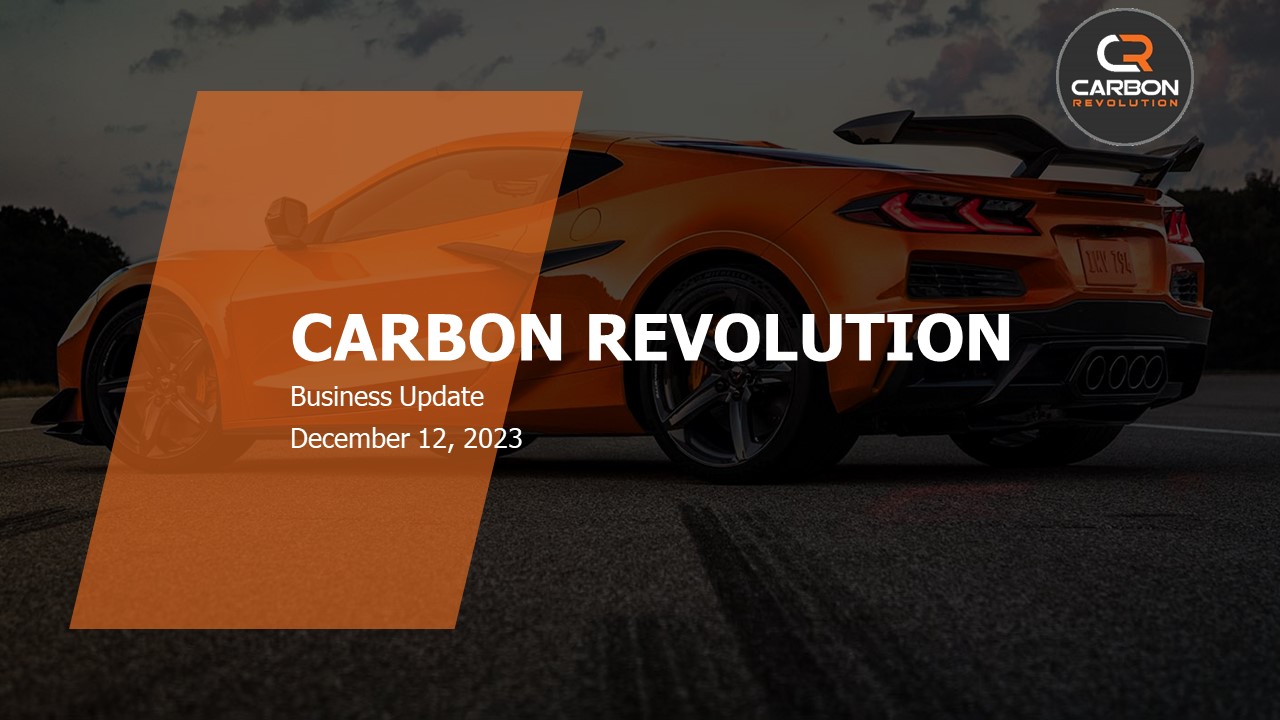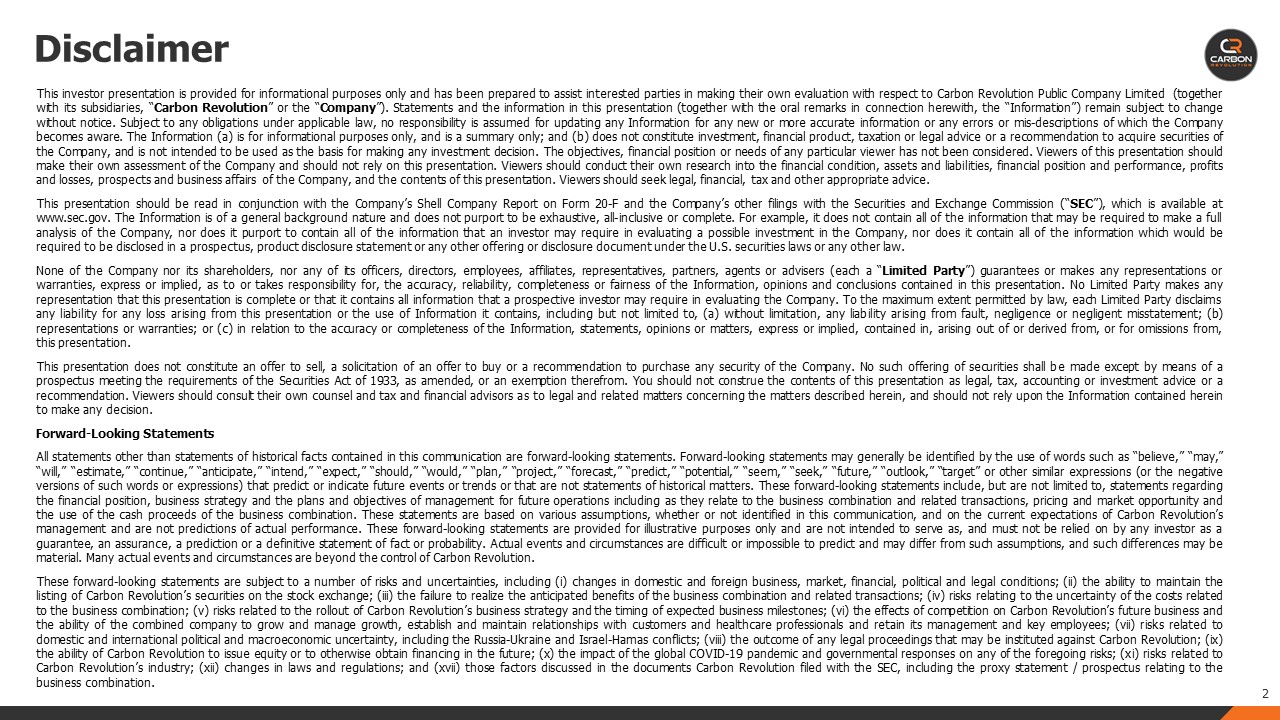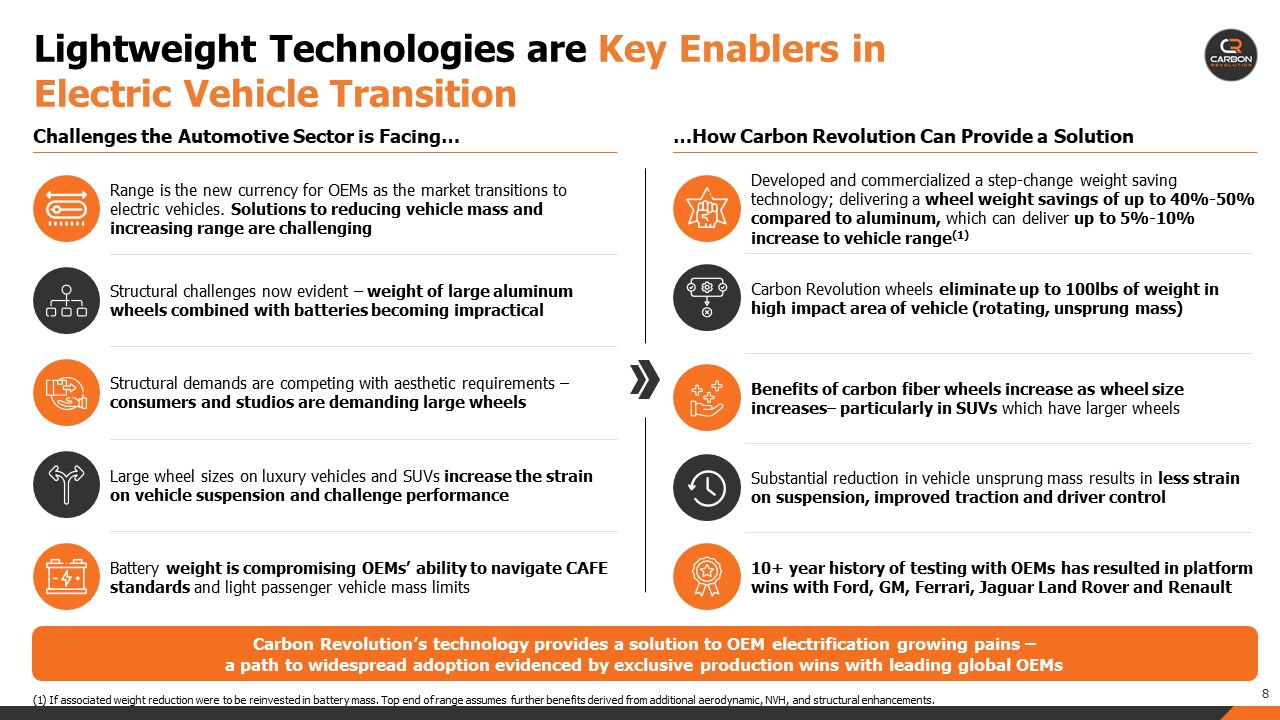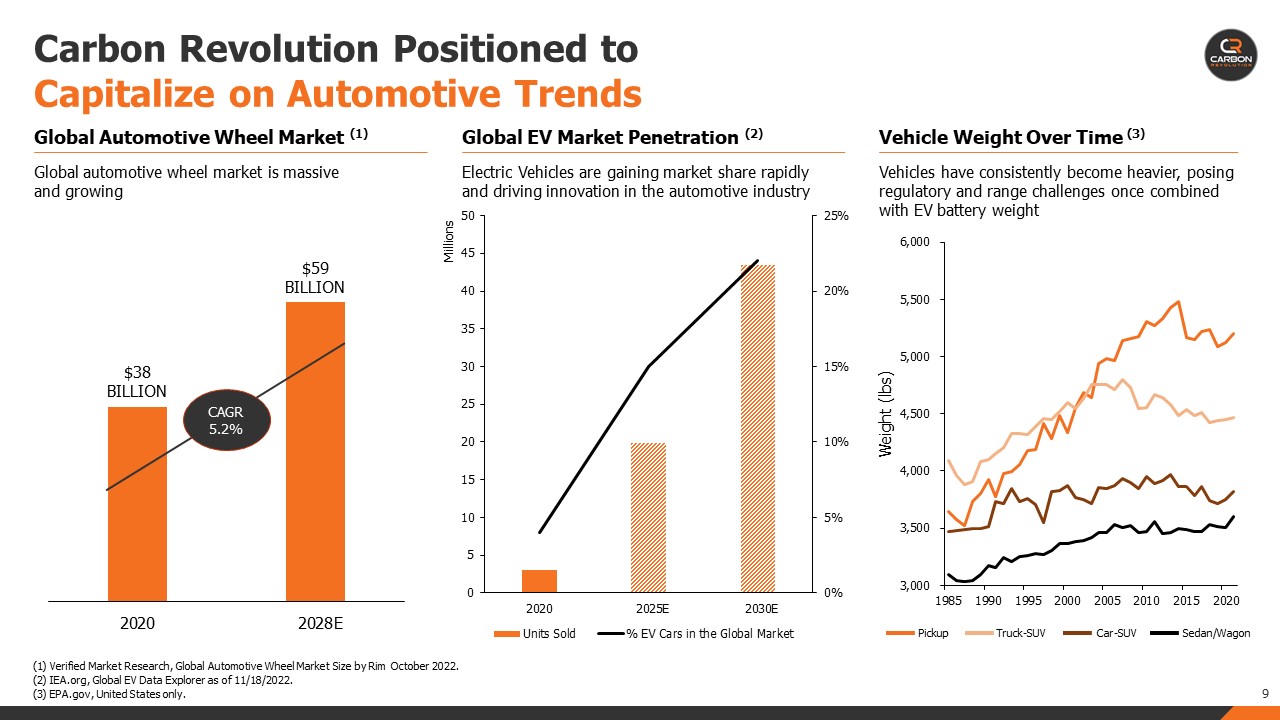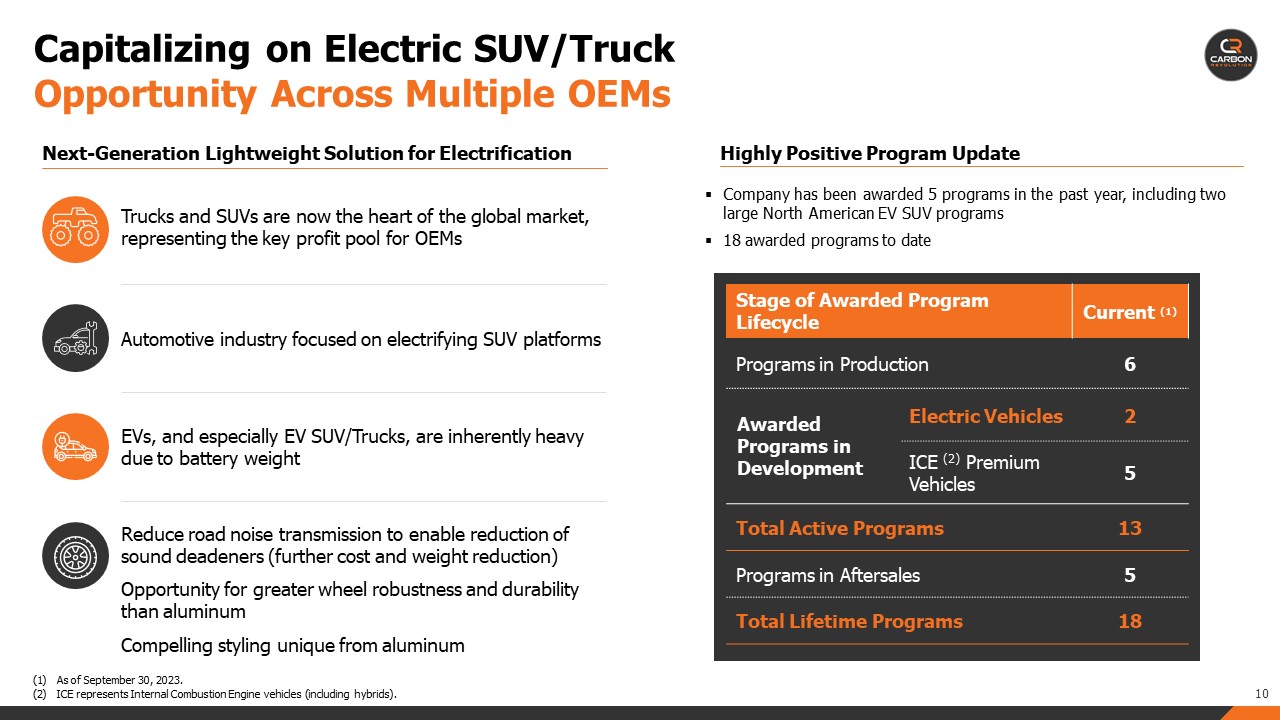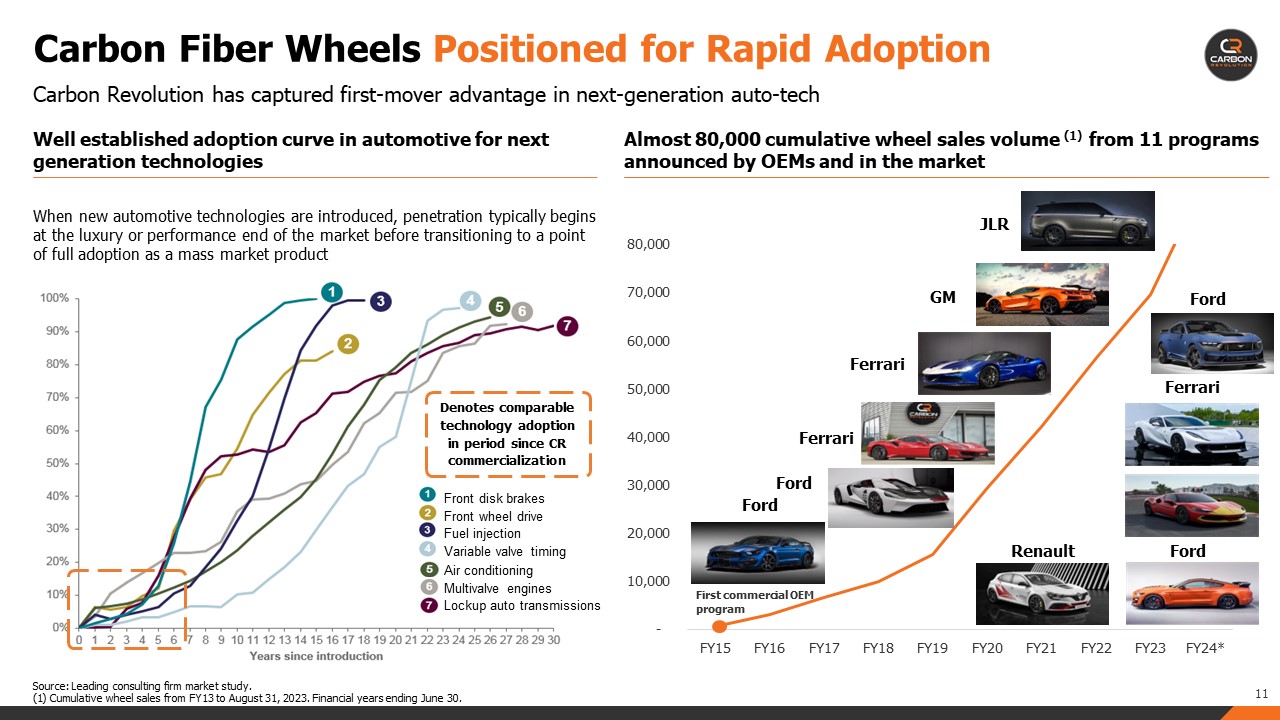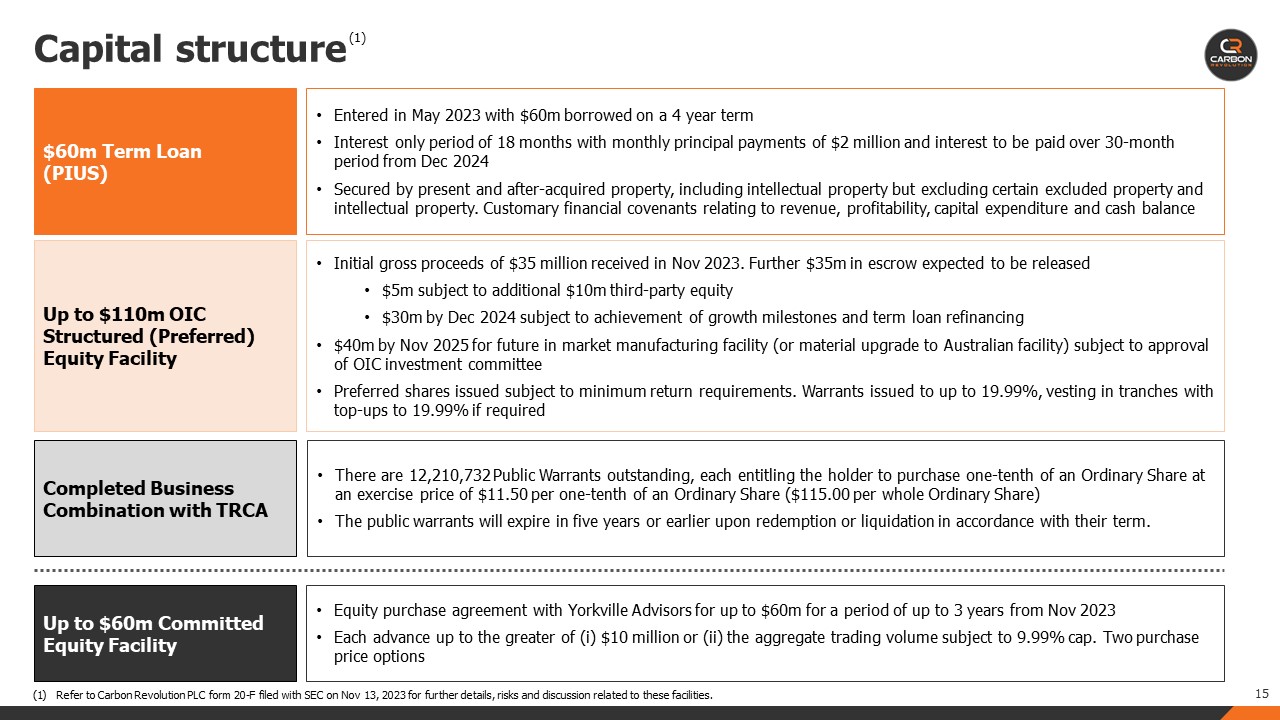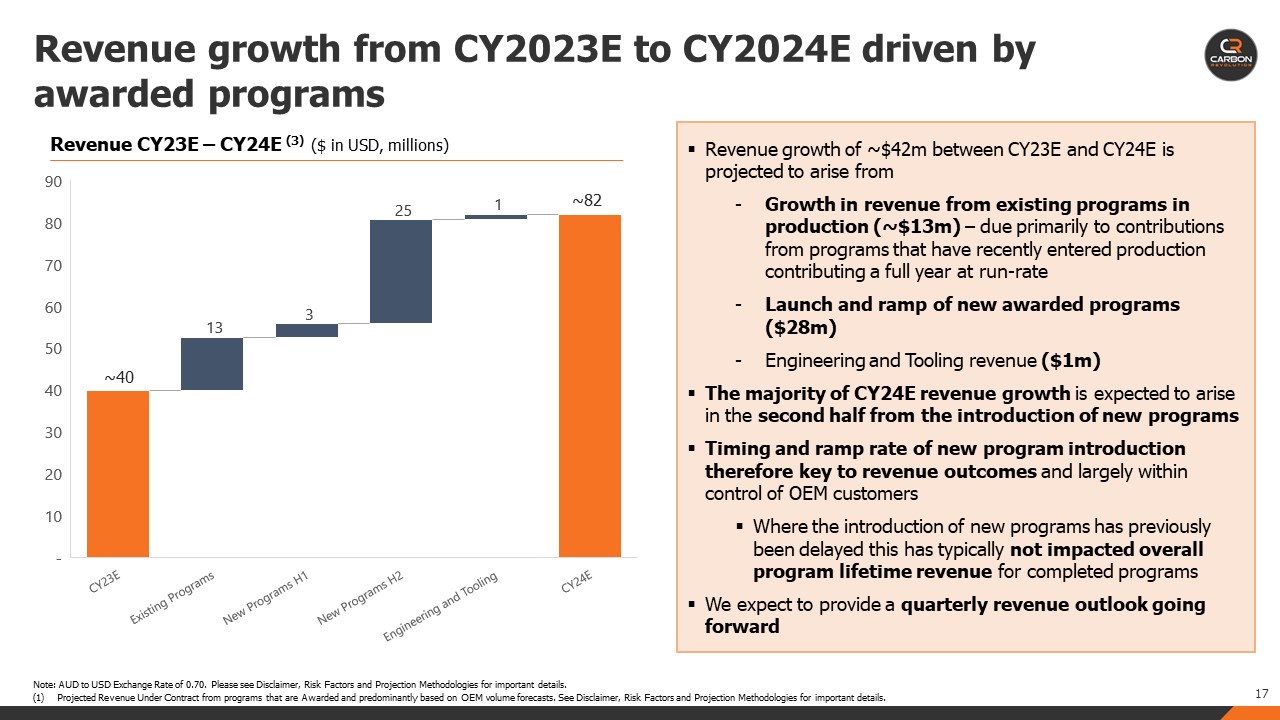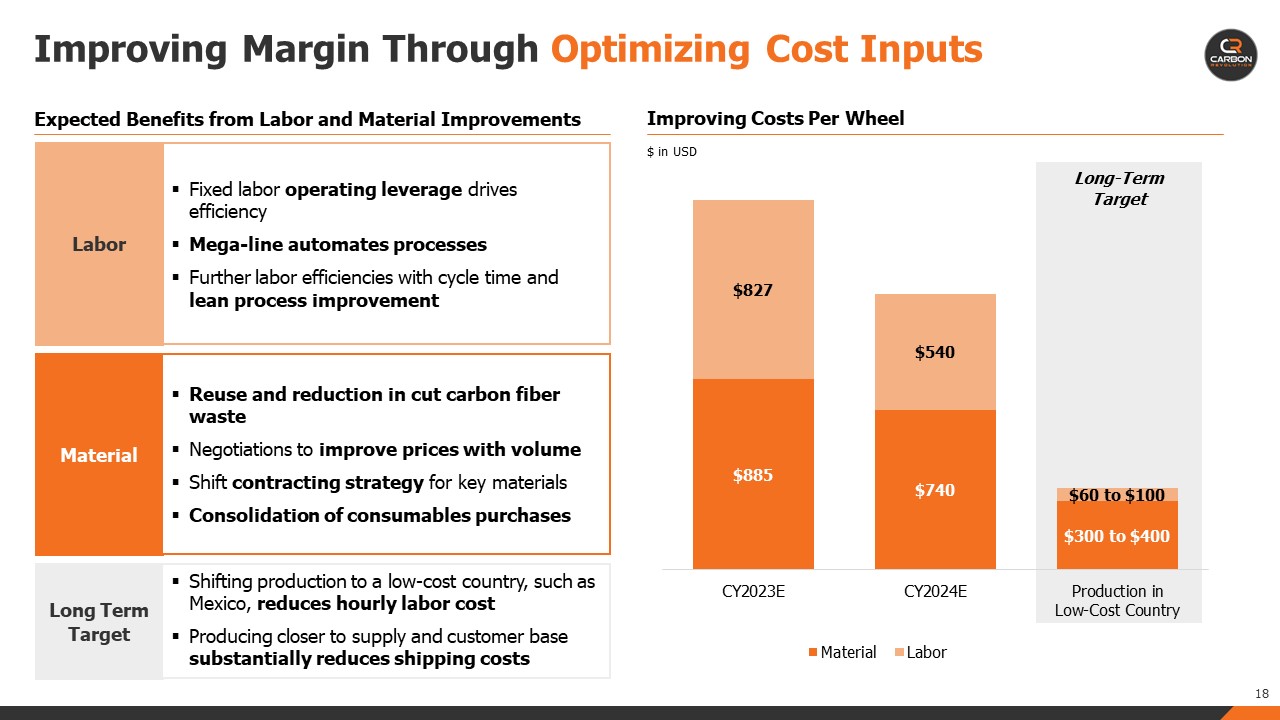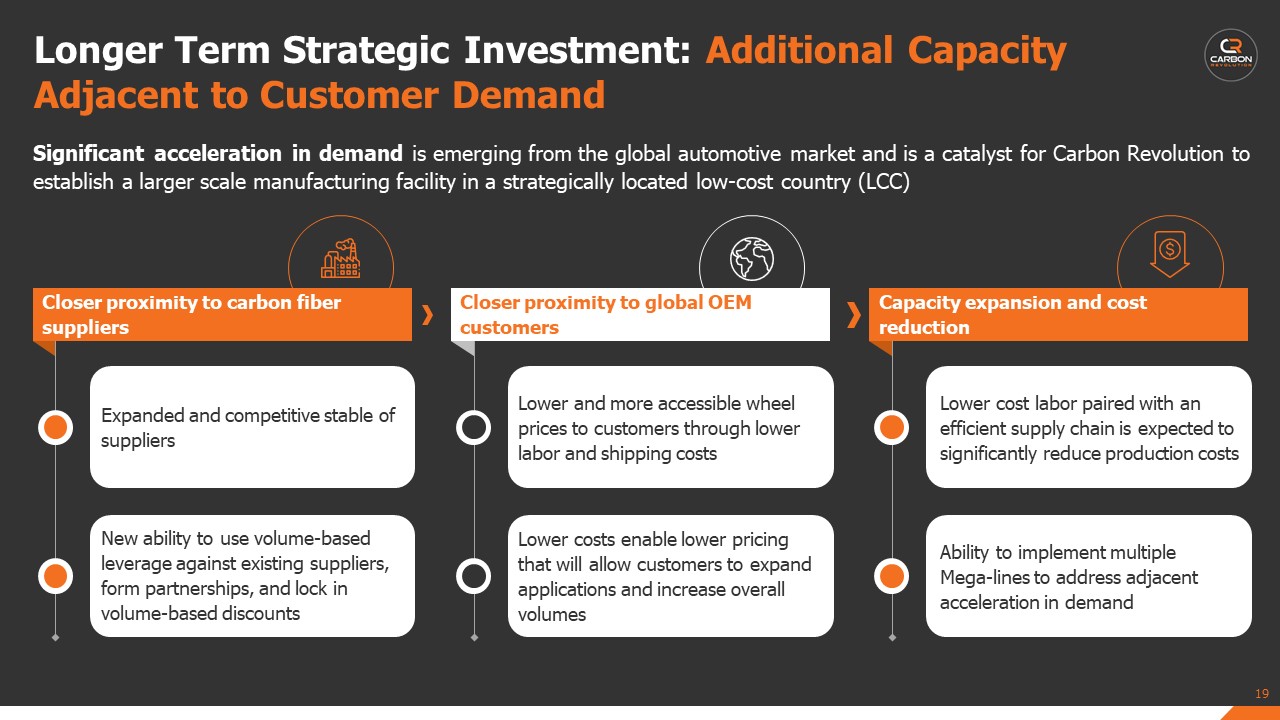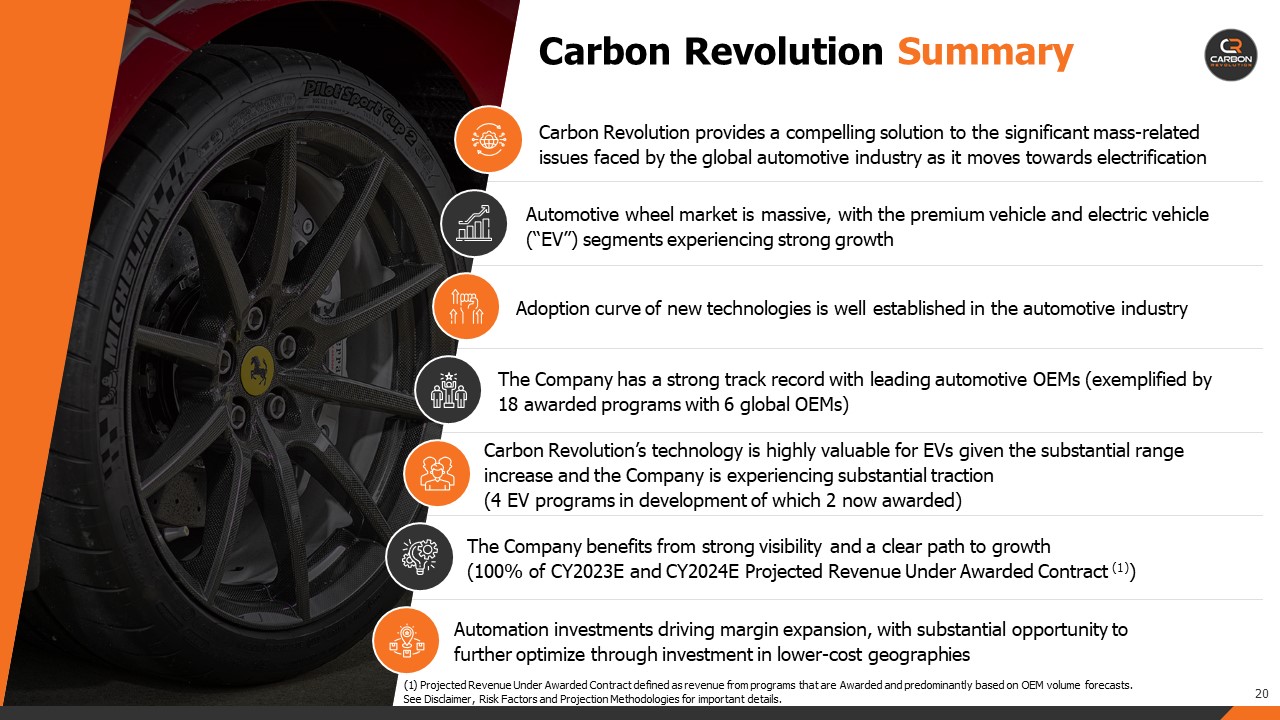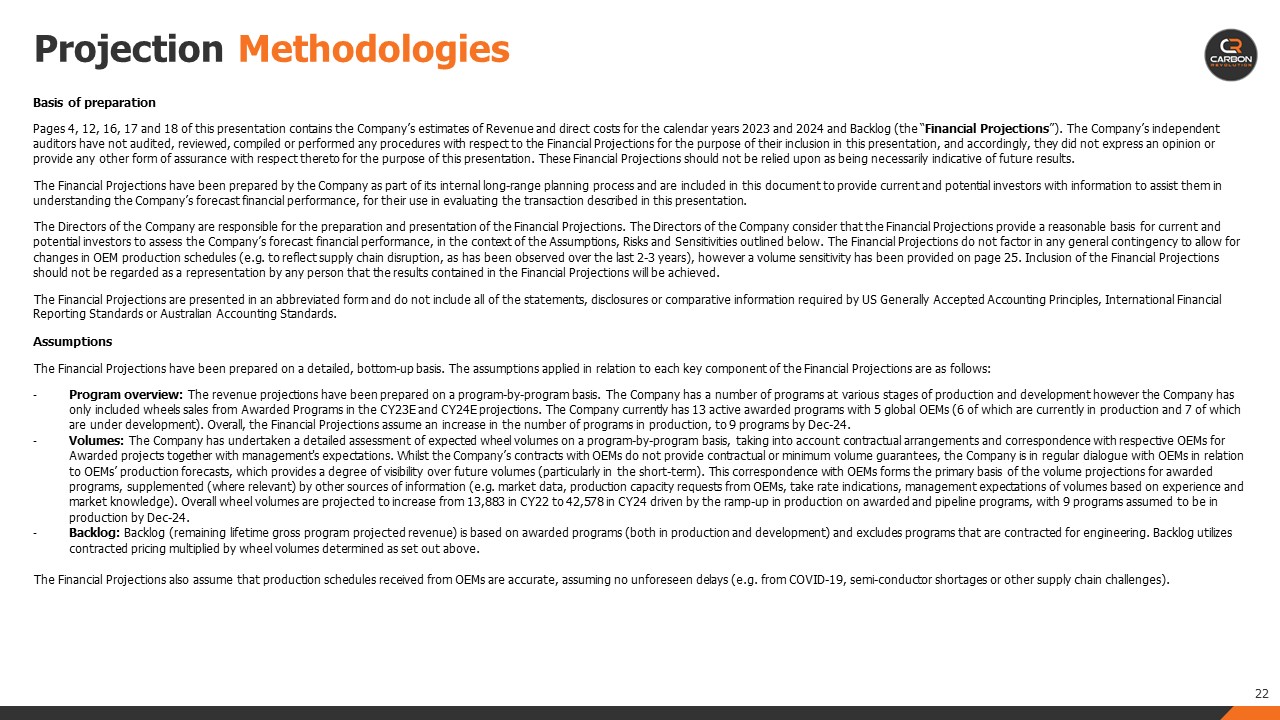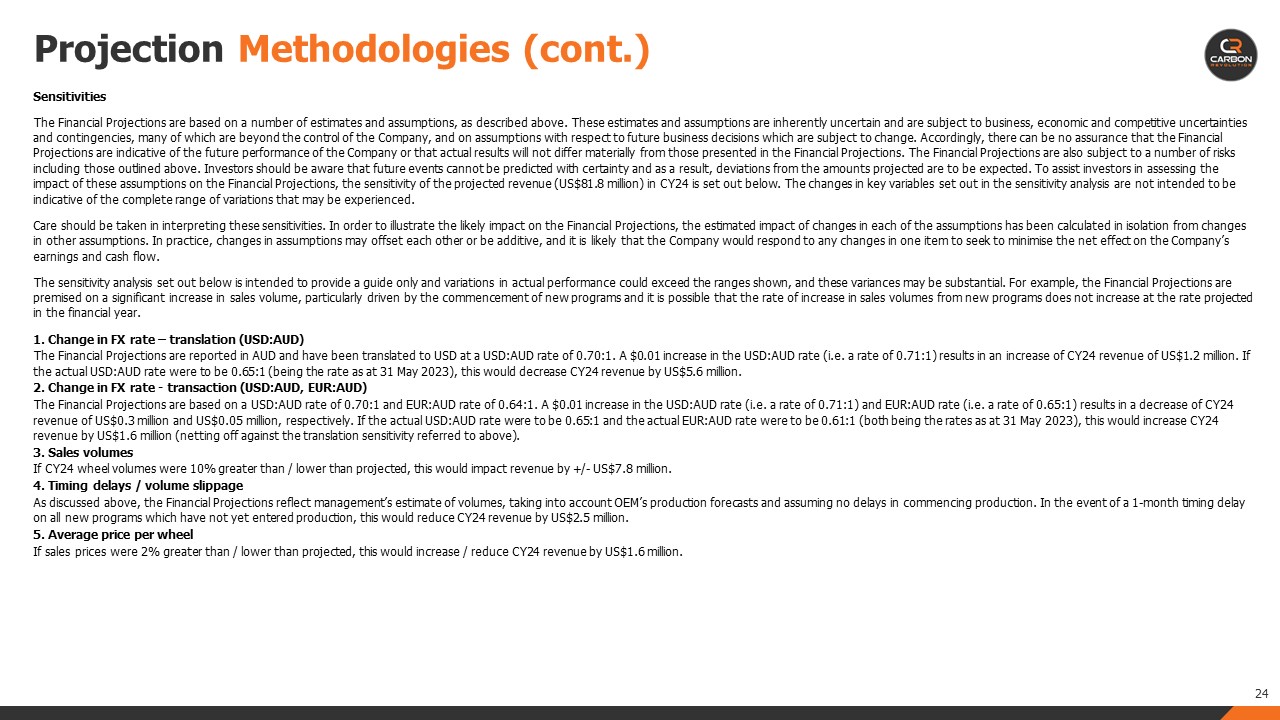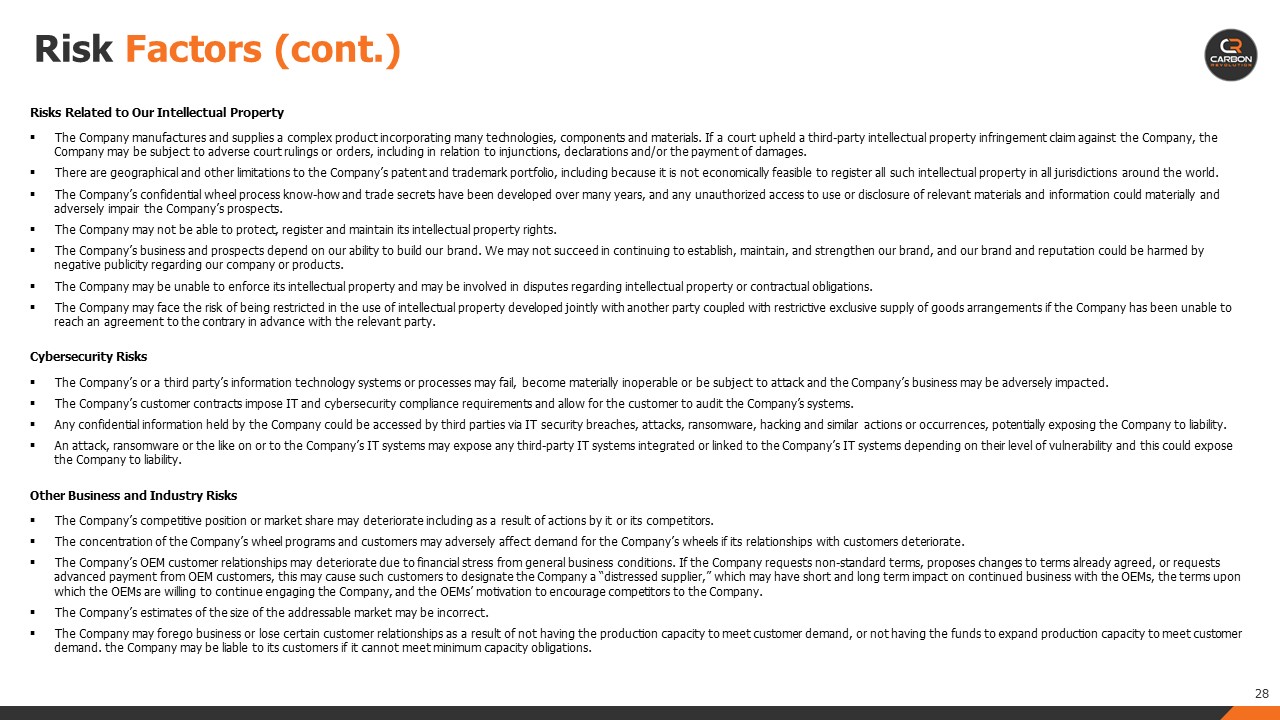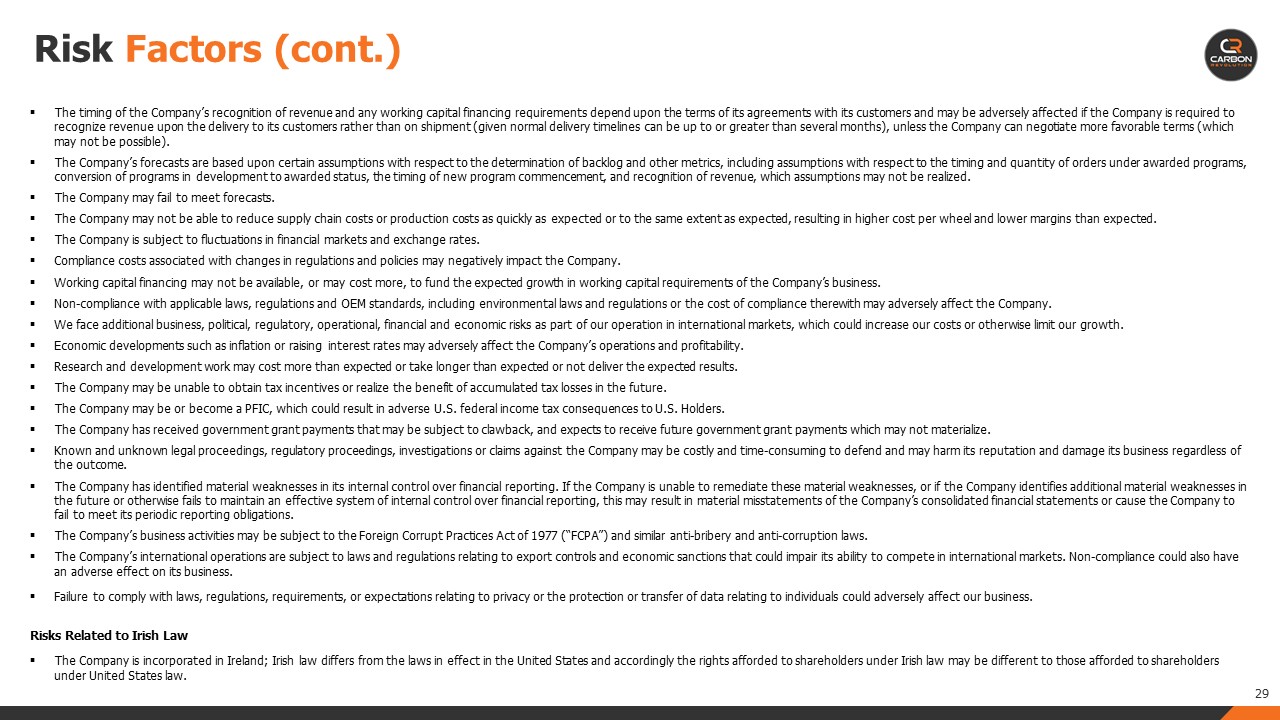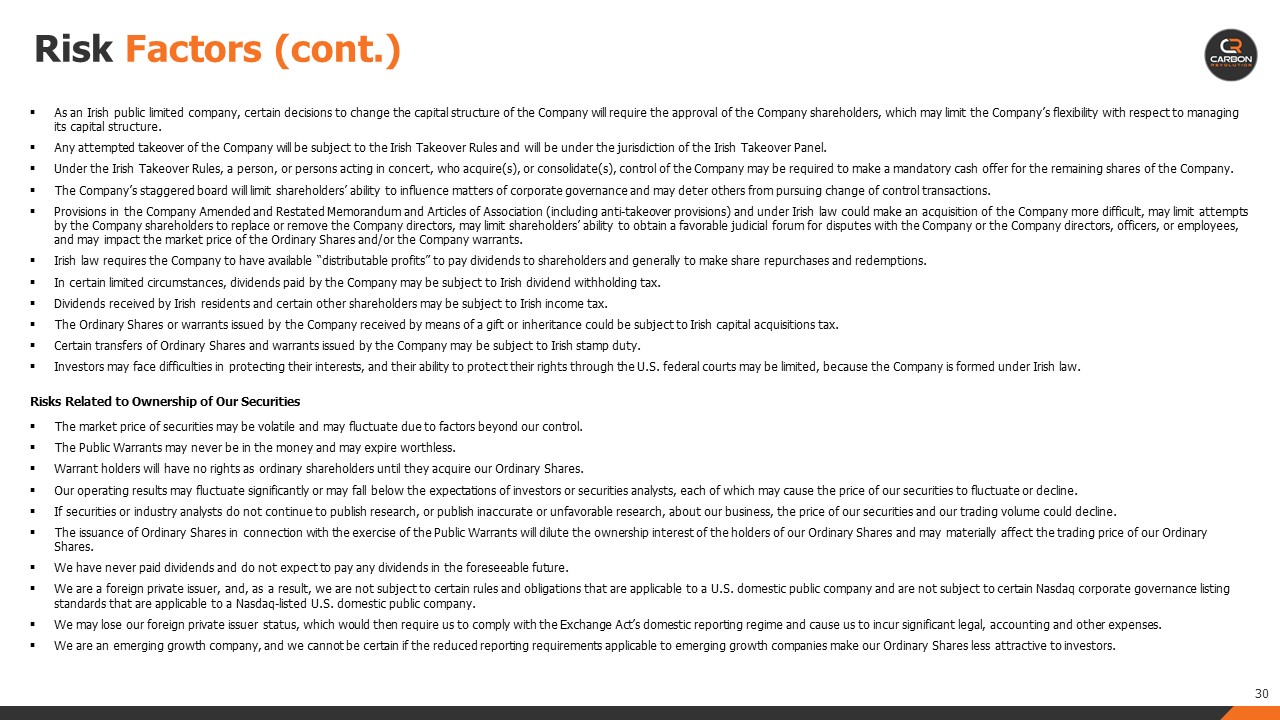This investor presentation is provided for informational purposes only and has been prepared to assist interested parties in making their own evaluation with respect to Carbon Revolution Public Company Limited (together with its subsidiaries, “Carbon Revolution” or the “Company”). Statements and the information in this presentation (together with the oral remarks in connection herewith, the “Information”) remain subject to change without notice. Subject to any obligations under applicable law, no responsibility is assumed for updating any Information for any new or more accurate information or any errors or mis-descriptions of which the Company becomes aware. The Information (a) is for informational purposes only, and is a summary only; and (b) does not constitute investment, financial product, taxation or legal advice or a recommendation to acquire securities of the Company, and is not intended to be used as the basis for making any investment decision. The objectives, financial position or needs of any particular viewer has not been considered. Viewers of this presentation should make their own assessment of the Company and should not rely on this presentation. Viewers should conduct their own research into the financial condition, assets and liabilities, financial position and performance, profits and losses, prospects and business affairs of the Company, and the contents of this presentation. Viewers should seek legal, financial, tax and other appropriate advice. This presentation should be read in conjunction with the Company’s Shell Company Report on Form 20-F and the Company’s other filings with the Securities and Exchange Commission (“SEC”), which is available at www.sec.gov. The Information is of a general background nature and does not purport to be exhaustive, all-inclusive or complete. For example, it does not contain all of the information that may be required to make a full analysis of the Company, nor does it purport to contain all of the information that an investor may require in evaluating a possible investment in the Company, nor does it contain all of the information which would be required to be disclosed in a prospectus, product disclosure statement or any other offering or disclosure document under the U.S. securities laws or any other law. None of the Company nor its shareholders, nor any of its officers, directors, employees, affiliates, representatives, partners, agents or advisers (each a “Limited Party”) guarantees or makes any representations or warranties, express or implied, as to or takes responsibility for, the accuracy, reliability, completeness or fairness of the Information, opinions and conclusions contained in this presentation. No Limited Party makes any representation that this presentation is complete or that it contains all information that a prospective investor may require in evaluating the Company. To the maximum extent permitted by law, each Limited Party disclaims any liability for any loss arising from this presentation or the use of Information it contains, including but not limited to, (a) without limitation, any liability arising from fault, negligence or negligent misstatement; (b) representations or warranties; or (c) in relation to the accuracy or completeness of the Information, statements, opinions or matters, express or implied, contained in, arising out of or derived from, or for omissions from, this presentation. This presentation does not constitute an offer to sell, a solicitation of an offer to buy or a recommendation to purchase any security of the Company. No such offering of securities shall be made except by means of a prospectus meeting the requirements of the Securities Act of 1933, as amended, or an exemption therefrom. You should not construe the contents of this presentation as legal, tax, accounting or investment advice or a recommendation. Viewers should consult their own counsel and tax and financial advisors as to legal and related matters concerning the matters described herein, and should not rely upon the Information contained herein to make any decision. Forward-Looking Statements All statements other than statements of historical facts contained in this communication are forward-looking statements. Forward-looking statements may generally be identified by the use of words such as “believe,” “may,” “will,” “estimate,” “continue,” “anticipate,” “intend,” “expect,” “should,” “would,” “plan,” “project,” “forecast,” “predict,” “potential,” “seem,” “seek,” “future,” “outlook,” “target” or other similar expressions (or the negative versions of such words or expressions) that predict or indicate future events or trends or that are not statements of historical matters. These forward-looking statements include, but are not limited to, statements regarding the financial position, business strategy and the plans and objectives of management for future operations including as they relate to the business combination and related transactions, pricing and market opportunity and the use of the cash proceeds of the business combination. These statements are based on various assumptions, whether or not identified in this communication, and on the current expectations of Carbon Revolution’s management and are not predictions of actual performance. These forward-looking statements are provided for illustrative purposes only and are not intended to serve as, and must not be relied on by any investor as a guarantee, an assurance, a prediction or a definitive statement of fact or probability. Actual events and circumstances are difficult or impossible to predict and may differ from such assumptions, and such differences may be material. Many actual events and circumstances are beyond the control of Carbon Revolution. These forward-looking statements are subject to a number of risks and uncertainties, including (i) changes in domestic and foreign business, market, financial, political and legal conditions; (ii) the ability to maintain the listing of Carbon Revolution’s securities on the stock exchange; (iii) the failure to realize the anticipated benefits of the business combination and related transactions; (iv) risks relating to the uncertainty of the costs related to the business combination; (v) risks related to the rollout of Carbon Revolution’s business strategy and the timing of expected business milestones; (vi) the effects of competition on Carbon Revolution’s future business and the ability of the combined company to grow and manage growth, establish and maintain relationships with customers and healthcare professionals and retain its management and key employees; (vii) risks related to domestic and international political and macroeconomic uncertainty, including the Russia-Ukraine and Israel-Hamas conflicts; (viii) the outcome of any legal proceedings that may be instituted against Carbon Revolution; (ix) the ability of Carbon Revolution to issue equity or to otherwise obtain financing in the future; (x) the impact of the global COVID-19 pandemic and governmental responses on any of the foregoing risks; (xi) risks related to Carbon Revolution’s industry; (xii) changes in laws and regulations; and (xvii) those factors discussed in the documents Carbon Revolution filed with the SEC, including the proxy statement / prospectus relating to the business combination. Disclaimer 2
